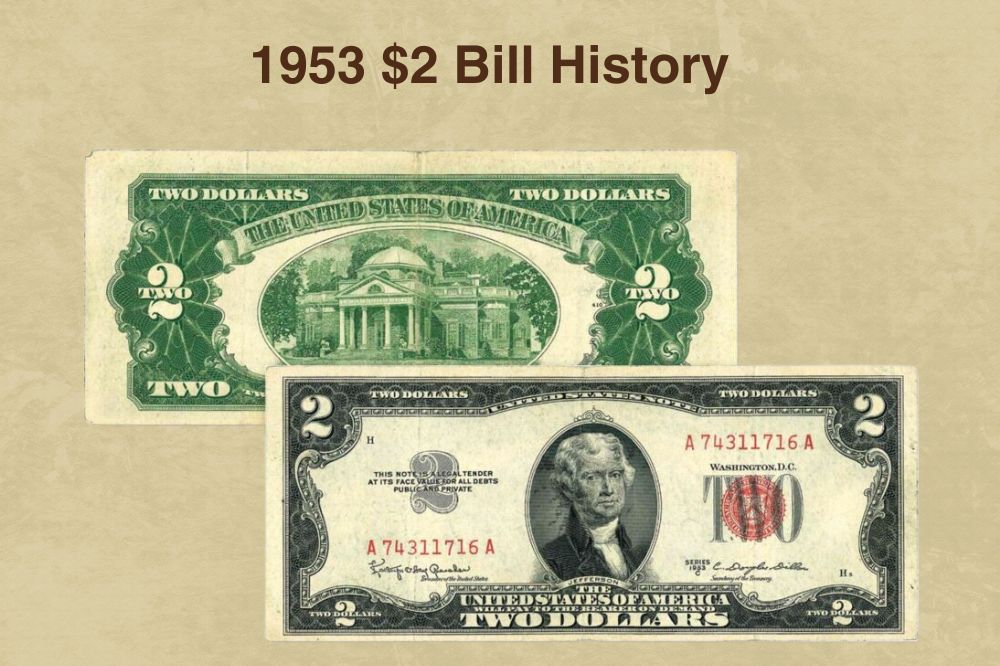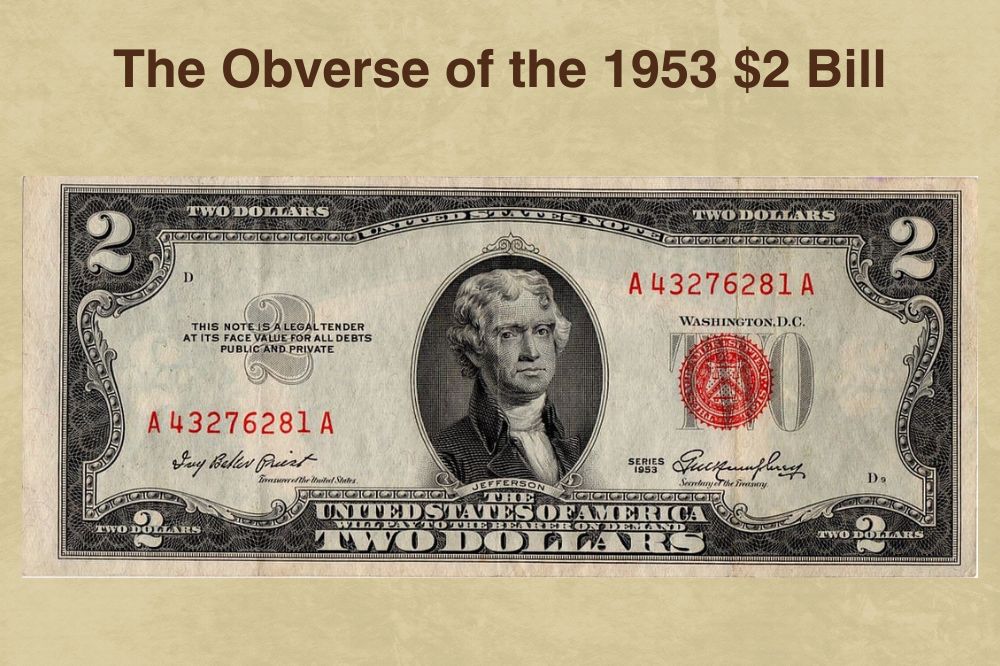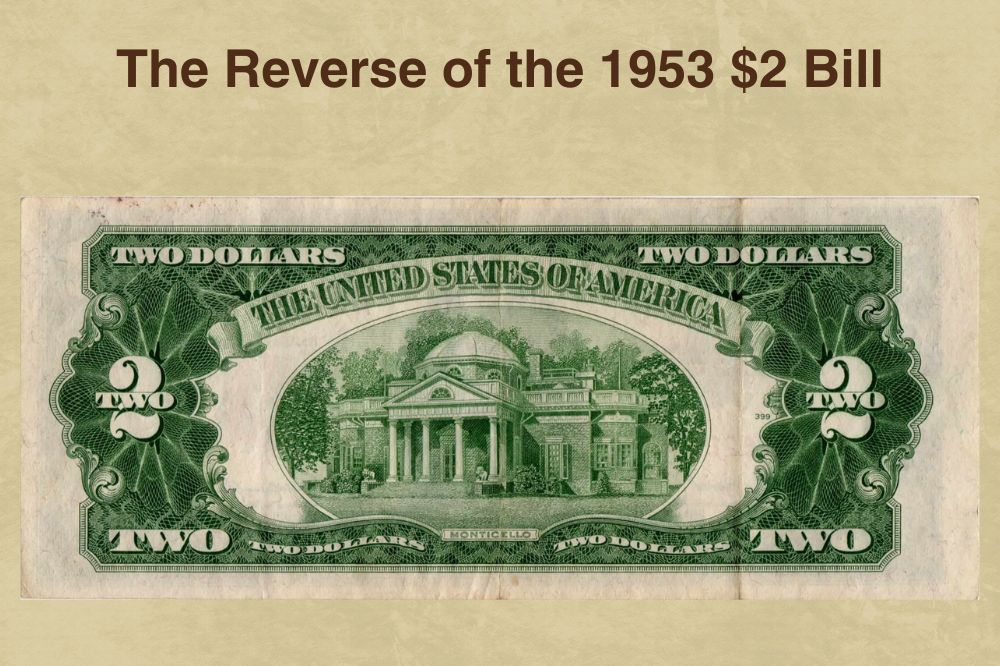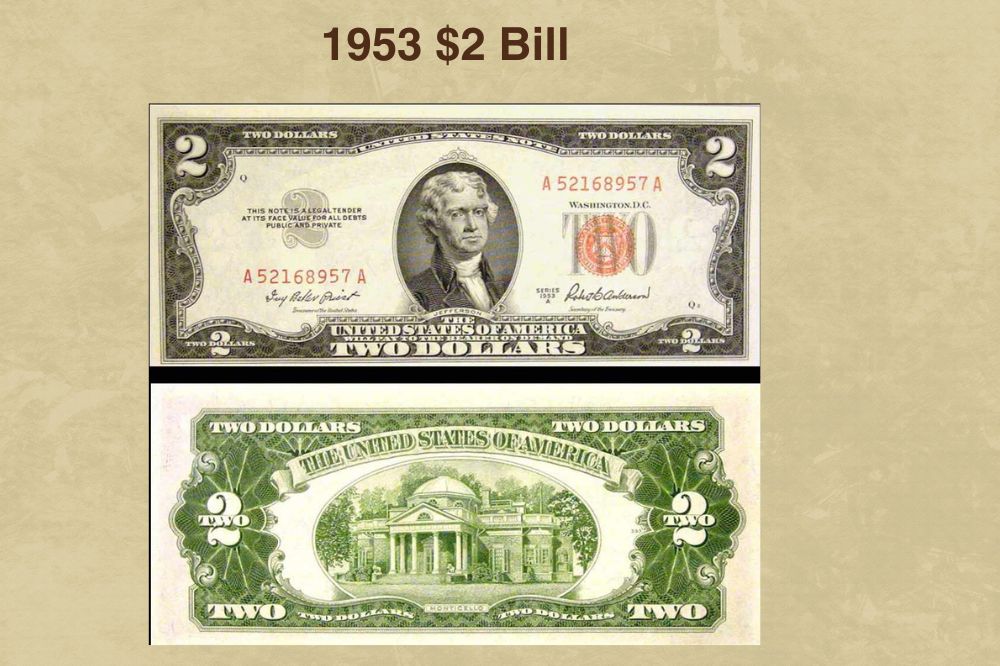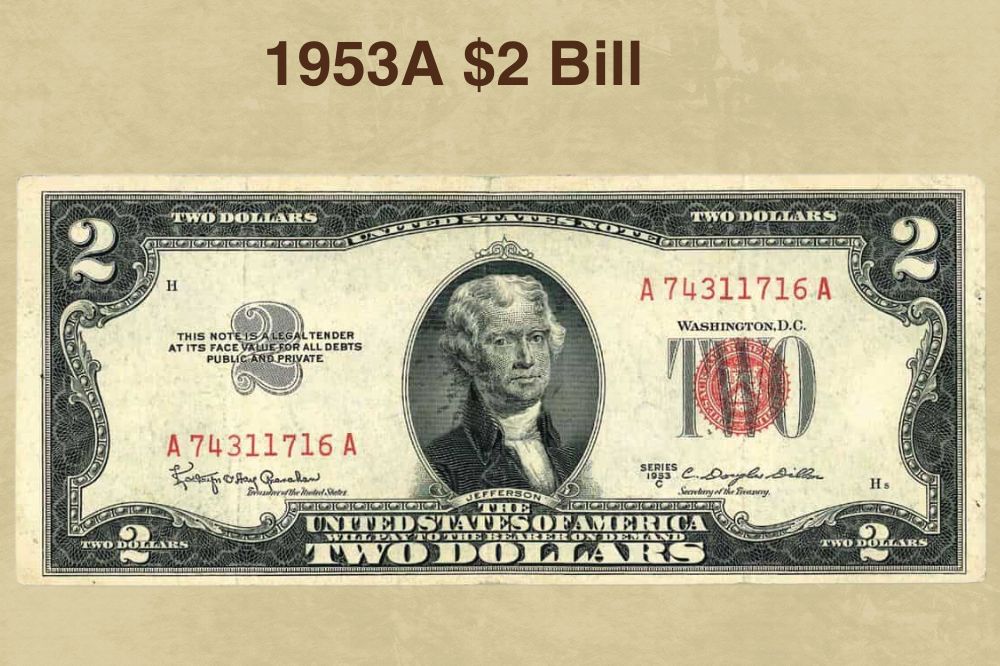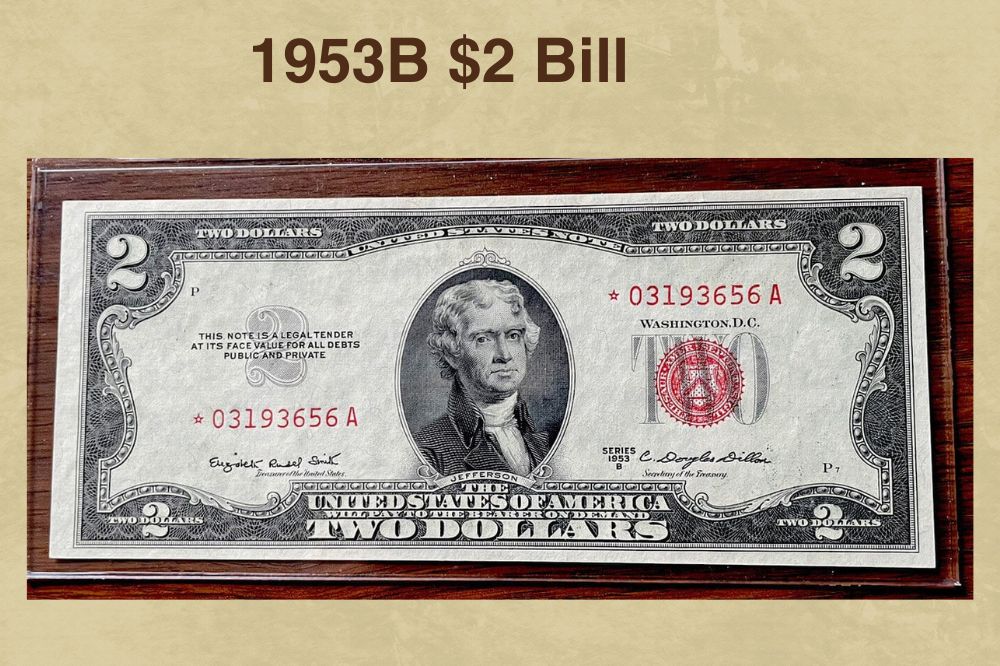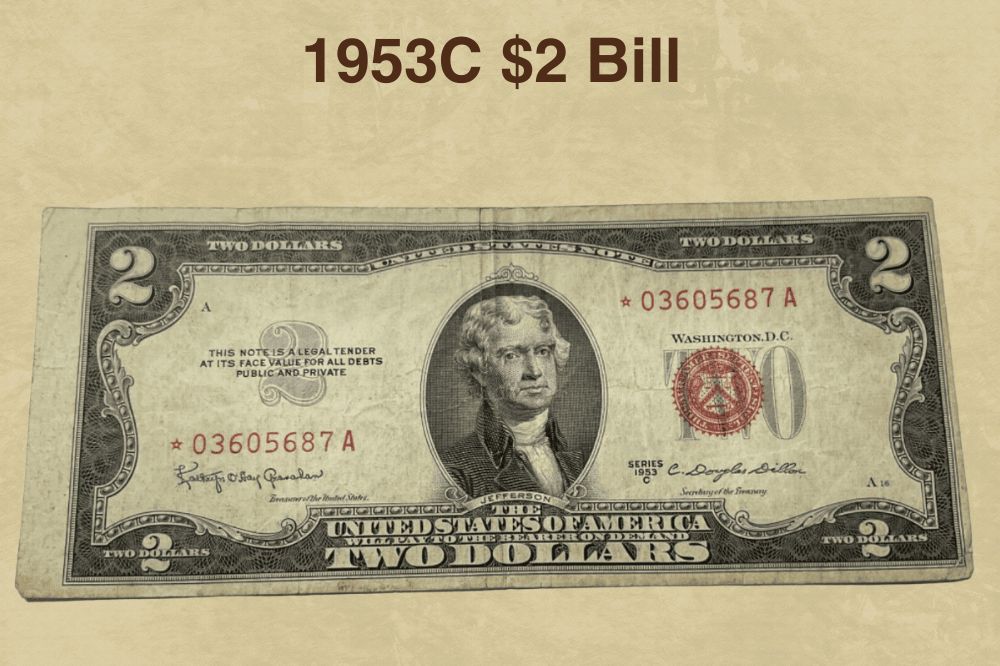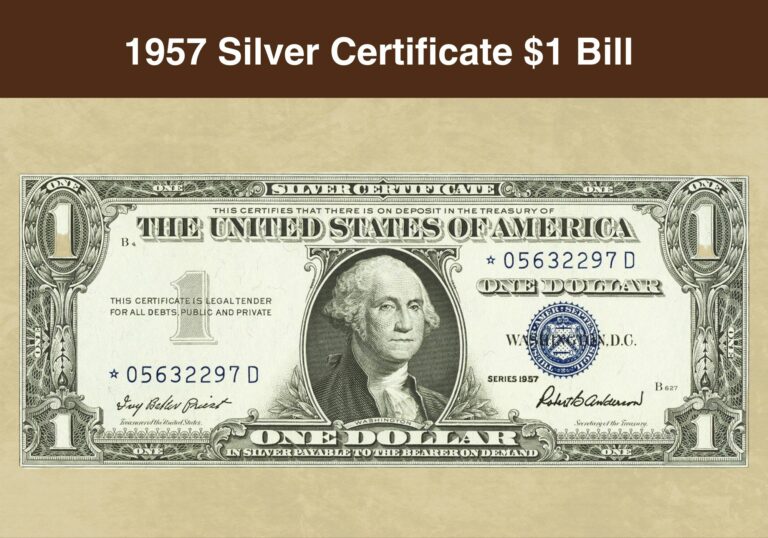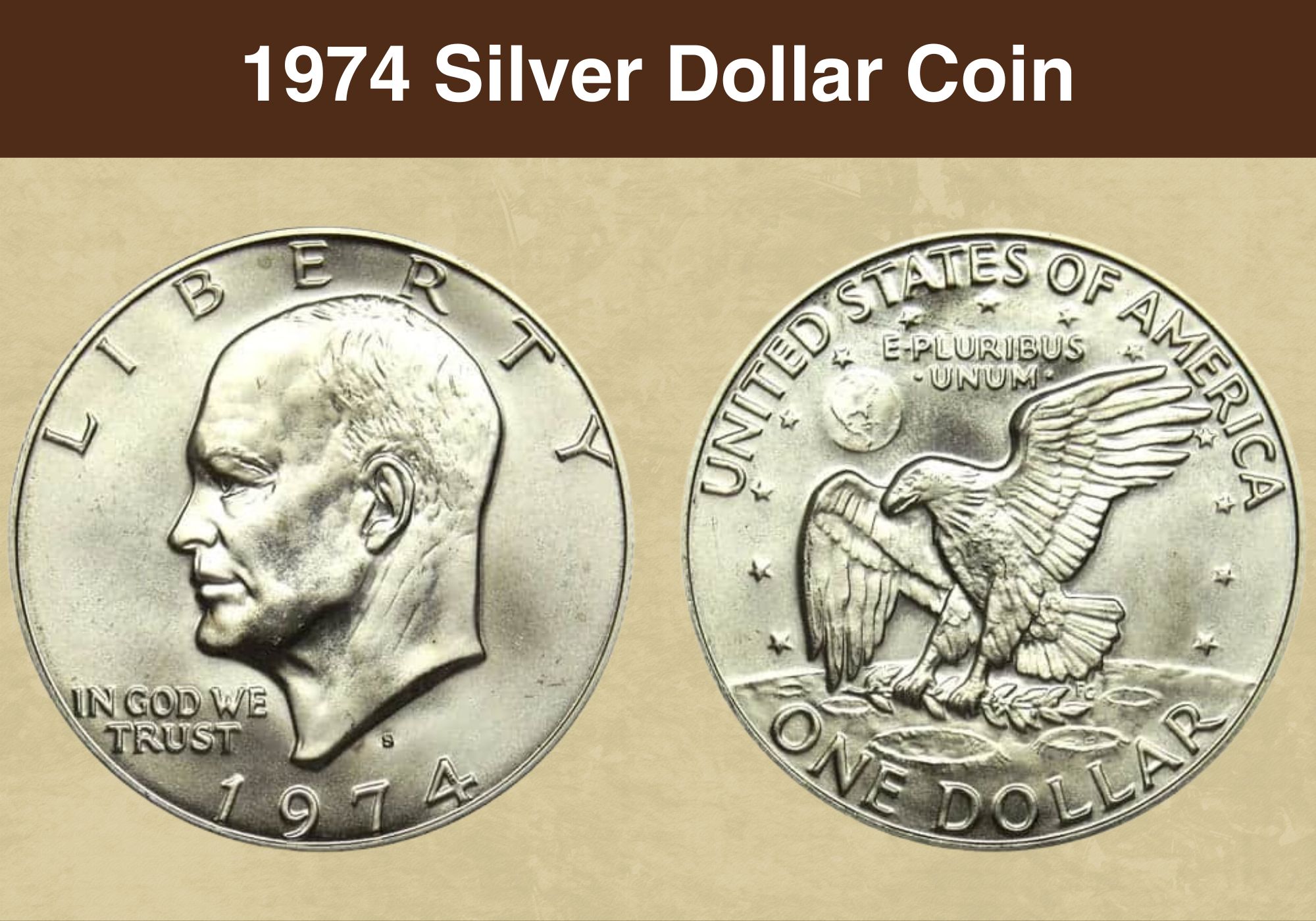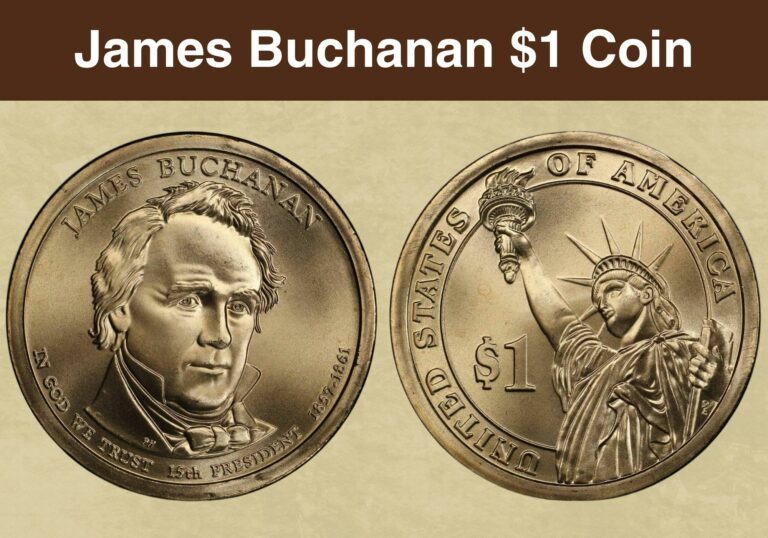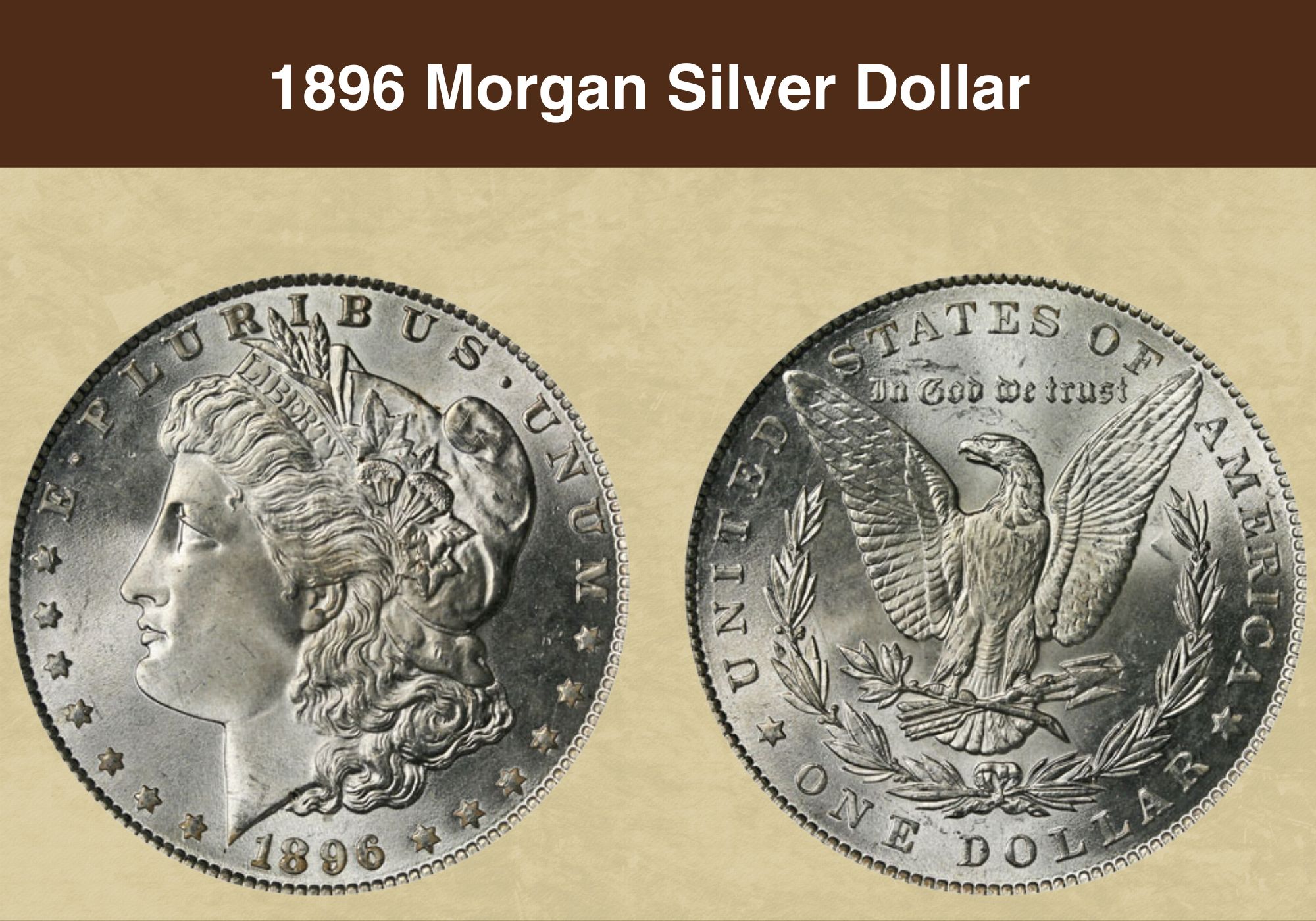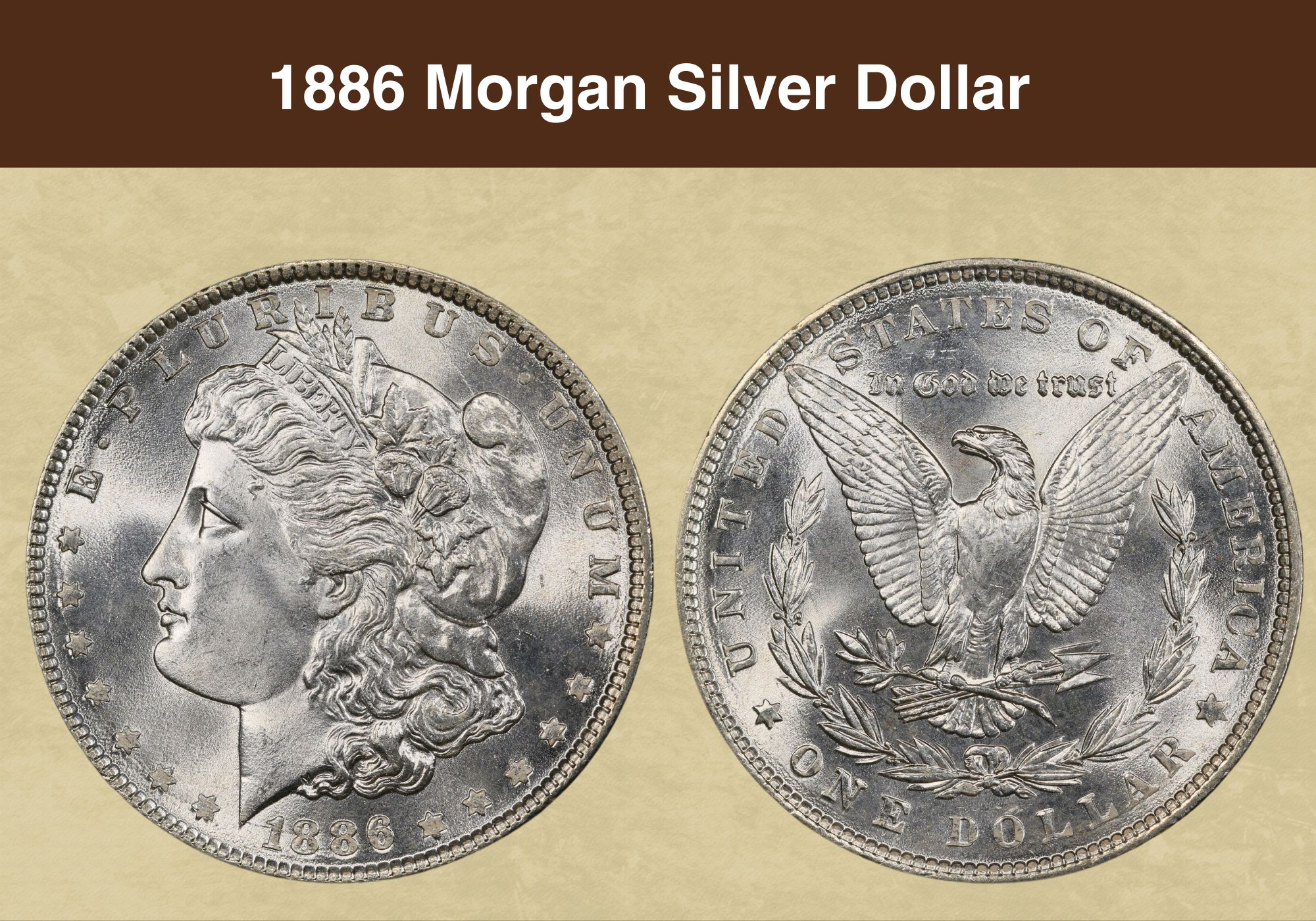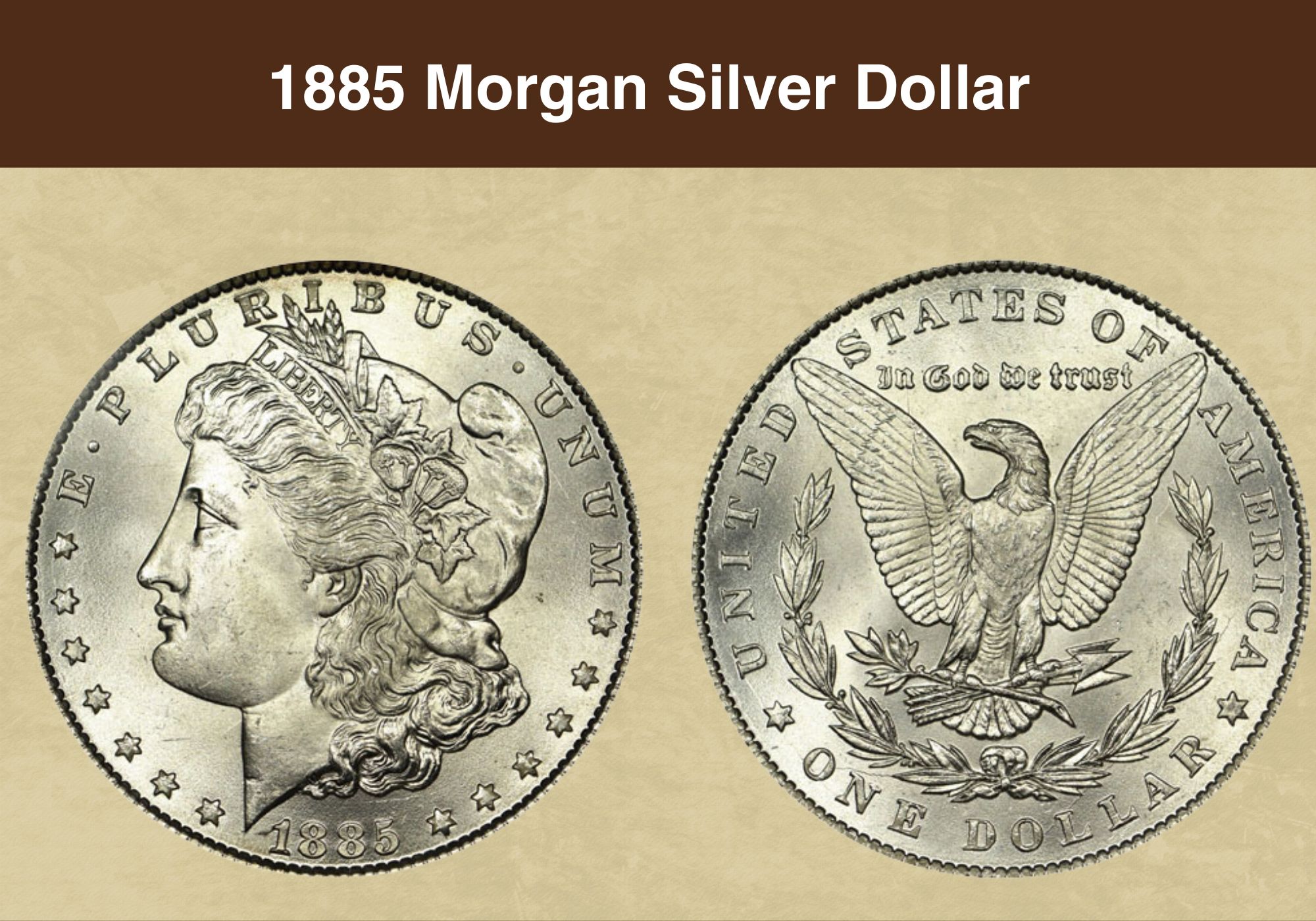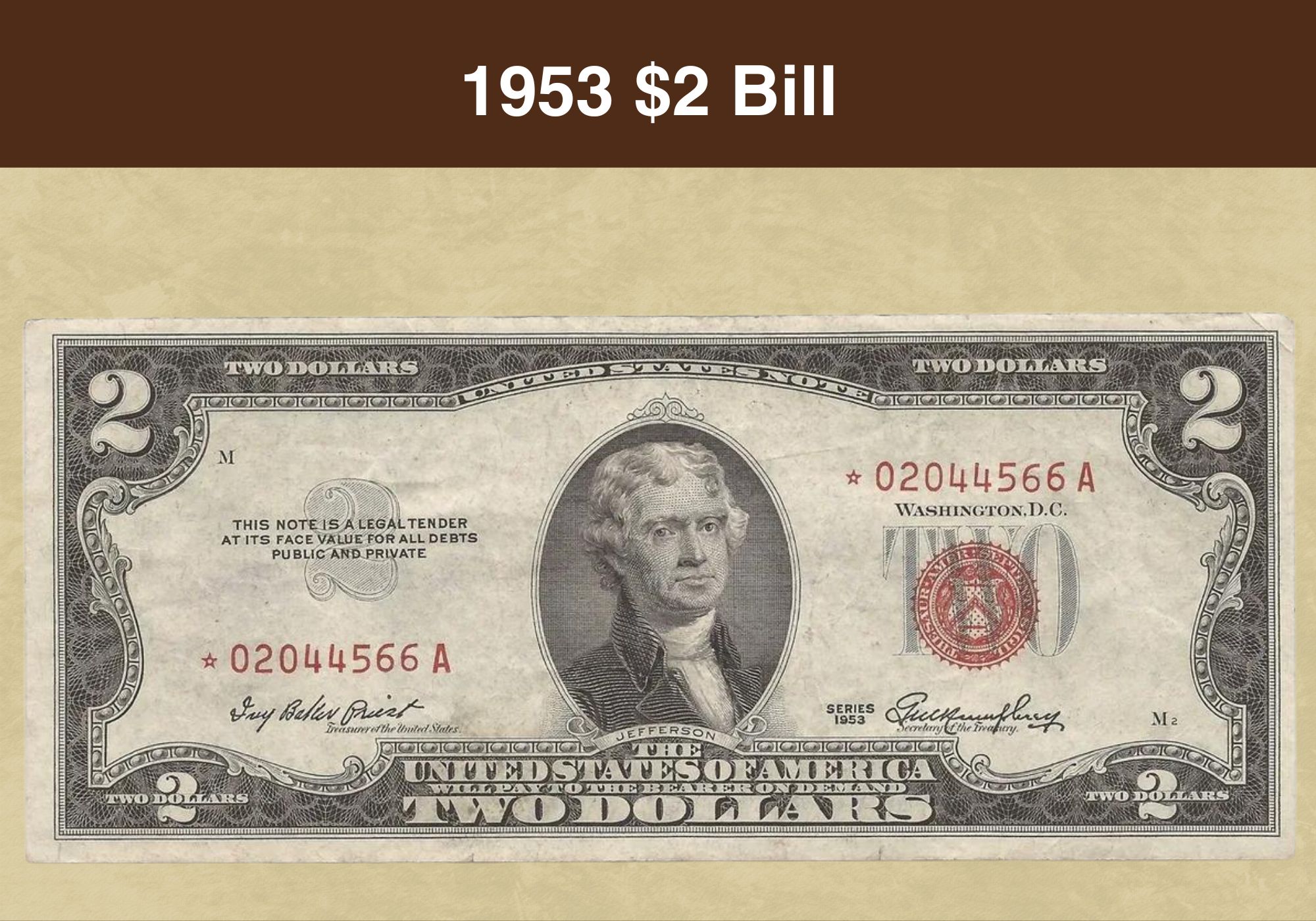
Coin Value Contents Table
If you’ve found a $2 bill from over 70 years ago, you’re probably wondering if it might be valuable. We’re going to look in detail at the 1953 $2 bill value to find out!
We’ll explore the different kinds of $2 bills with that date. We’ll learn about their history and design, as well as some of the interesting error bills that have come to light. And we’ll investigate grading bank notes to see what difference condition makes to value.
Ready to find out more? Then read on!
1953 $2 Bill Value Chart |
||
| Series | Circulated – Fine to Extremely Fine | Uncirculated |
| 1953 $2 Bill No Star Value | $2.25-$2.50 | $12+ |
| 1953 $2 Bill Star Value | $10-$15 | $90 |
| 1953A $2 Bill No Star Value | $2.25-$5 | $12+ |
| 1953A $2 Bill Star Value | $20-22 | $80 |
| 1953B $2 Bill No Star Value | $2.75-$5.50 | $12+ |
| 1953B $2 Bill Star Value | $15-$18 | $75 |
| 1953C $2 Bill No Star Value | $3.50-$6.60 | $12+ |
| 1953C $2 Bill Star Value | $15-$18 | $90 |
1953 $2 Bill History
The first Legal Tender $2 bills were authorized by Congress on February 25th, 1862. They were a larger size than the notes we’re familiar with today. For that reason, currency collectors refer to them as “Large Size” notes.
They were different from earlier bills, because they couldn’t be exchanged for silver coins. They were effectively a loan to the government, and carried a red seal.
Those early $2 bills bore the image of Alexander Hamilton, Founding Father and first Secretary of the US Treasury, on the obverse. But by 1953, much had changed.
In 1869, the portrait of Hamilton was replaced with one of Thomas Jefferson. And in 1928, the size of the bills was reduced. From then on, they were the dimensions we’re used to using today – 6.1 inches by 2.6 inches.
Both these changes remained in place for the bills printed in 1953. But that year, the red Treasury seal which had been positioned on the left of the bill was moved to the right. It was made smaller too, and was printed on top of the word “TWO”, which was in gray.
Four different varieties of $2 bill were first produced in 1953. They are known by the series numbers 1953, 1953A, 1953B and 1953C.
There’s one thing that appears on all modern bills, but which is missing from the 1953 series. That’s the motto “IN GOD WE TRUST”. This didn’t feature on the $2 bill until a decade later.
Production of $2 bills gradually declined during the 1950s. As they became ever more scarce, people took to hoarding those they received. That, of course, meant even fewer bills in circulation. And in 1966, production ceased altogether.
After a ten-year hiatus, they were brought back in 1976 as part of celebrations to mark the bicentenary of US independence. The color of the Treasury seal was changed from red to green to mark the occasion. They remain in production to this day, still with the green seal.
The denomination isn’t popular, however. It’s associated with gambling and prostitution, and some consider it bad luck.
And because they’re rarely used, trying to pay for things with $2 notes can cause problems. In 2005, a man in Baltimore was jailed for trying to use them. Both the shopkeeper and the police wrongly believed they were fakes.
Features of the 1953 $2 Bill
The Obverse of the 1953 $2 Bill
The first $2 Legal Tender Notes were issued in 1862. Those had the image of Alexander Hamilton on the obverse. But in 1869 that was replaced with a portrait of Thomas Jefferson. It is this image that still appears on modern $2 bills.
The former president gives this bill it’s most common nickname – the Tom. It’s also sometimes referred to as the “Dirty Tom”, as it was reputedly a favorite way to pay prostitutes.
The engraving of Jefferson is by Charles K. Burt, based on an earlier portrait by Gilbert Stuart.
The Treasury seal appears on the right of the bill, and is printed in red. The serial number is also red.
The four different series each have a different combination of signatures on the obverse.
The 1953 series is signed by Ivy Baker Priest on the left, and G. M. Humphrey on the right.
The 1953A series combines Priest’s signature with that of Robert B. Anderson. Anderson succeeded Humphrey as Secretary to the Treasury.
The 1953B series saw both signatures change. Ivy Baker Priest’s was replaced with that of Elizabeth Rudel Smith, while Anderson’s was replaced with C. Douglas Dillon.
The final change was for the 1953C series. These notes have Kathryn O’Hay Granahan’s signature in place of Rudel Smith’s. It appears alongside that of C. Douglas Dillon, who remained Secretary to the Treasury.
At the bottom of the bill is the legend “THE UNITED STATES OF AMERICA WILL PAY TO THE BEARER ON DEMAND TWO DOLLARS”. From 1963 onwards, the reference to paying on demand was excised, and only the country name and denomination remained.
The Reverse of the 1953 $2 Bill
The reverse of the 1953 $2 bill features an engraving of Monticello. This was the large estate in Charlottesville, Virginia, which belonged to Thomas Jefferson. The image was the work of an engraver named Joachim Clarence Benzing.
Benzing was born in Maryland, and started his career at the US Mint modelling clay for medals. From there, he moved on to engraving, producing artwork for bank notes and later for stamps.
Above the image is a banner with the words “UNITED STATES OF AMERICA”. The denomination “TWO DOLLARS” appears four times, with the word “TWO” an additional four times. The digit “2” also appears on the left and right-hand sides of the note for good measure.
Other Features of the 1953 $2 Bill
Although we often think of bank notes as being made of paper, this isn’t correct. The 1953 $2 bill is actually made of a combination of 75 per cent cotton and 25 per cent linen.
It measures 6.1 inches by 2.6 inches, the same dimensions as modern bills. This is considerably smaller than the first Legal Tender $2 Notes, which measured 7.4 inches by 3.1 inches.
This YouTube video from Treasure Town takes you through all the features of the 1953 $2 bill.
1953 $2 Bill Value Guides
1953 $2 Bill Value
To tell which series your bill is from, look just to the left of the red Treasury seal on the obverse. (That’s the side with Jefferson’s portrait.) The series number will be printed there in small letters. 1953 series bills will also be signed by Ivy Baker Priest and Treasury Secretary G. M. Humphrey.
Next, determine whether your bill is a star or non-star type. Star bills are those with a star at the end of the serial number. They were produced to replace defective bank notes, so they’re much rarer – and more valuable – than non-star bills.
The value of any particular note will also depend on its condition. A 1953 series $2 bill without a star in fine or extremely fine condition will be worth $2 to $3.
In uncirculated condition, values are higher. The same non-star bill in uncirculated condition will be worth upwards of $12. And uncirculated star bills can be worth around $90.
But these are broad estimates. To get a better idea of value, you’ll need to know the grade of your bill. Bank notes are graded from 1 to 70.
70 is used for the finest condition – a note that has no evidence of handling at 5 times magnification. To get the perfect grading, the margins and registration must also be centered perfectly. And the note must not show any signs of processing to improve its condition.
The highest values are for bills graded 65 and above. Values for a non-star note in this condition range from $15 for a noted graded 65, to $150 for one graded 67.
A star note graded 65 will be worth around $80, and one graded 67 about $250. The finest quality 1953 $2 star notes to have come to light so far are graded 68. And those are each worth around $600.
Other features can affect value too. An interesting serial number, or notes with sequential serial numbers are highly collectible. In 2007, a crisp, uncirculated consecutive run of 20 star 1953 $2 bills sold at auction for $1,840.
1953A $2 Bill Value
The range in value for 1953A non-star $2 bills in circulated condition is slightly larger than for the 1953 series. Examples in fine or extremely fine condition can range from around $2 to $5. In uncirculated condition, values start at around the $12 mark.
Just as with the 1953 series, star notes are more valuable. Those are worth around $20 in fine or extremely fine condition, whilst uncirculated examples start at around $80.
Again, collectors will be prepared to pay more for bills with interesting or sequential serial numbers.
2007 saw a record price paid for a lot combining two specimen $2 bills. One was from the 1953A series and the other from the 1953C series. Both had the same sequential serial number – H12345678G. And together they sold for $12,925.
1953B $2 Bill Value
The pattern of values for 1953B $2 bills is similar to those for the other 1953 series.
Circulated non-star notes in fine or extremely fine condition are worth between $3 and $6. If they’re in uncirculated condition, values start at around $12.
Star notes carry the usual premium. In fine or extremely fine circulated condition, they’ll fetch between $15 and $18. And you can expect to pay at least $75 for an uncirculated example.
An non-star specimen note graded 67 PPQ by independent currency experts the PCGS sold at auction in 2008. The letters PPQ stand for “Premium Paper Quality”. It was classified as a “superb gem” and had a sequential serial number. It crossed the block for over $10,000.
1953C $2 Bill Value
A circulated 1953C non-star $2 bill in fine or extremely fine condition will be worth between $3 and $7. A star bill in the same kind of shape will be worth around $18.
As ever, uncirculated bills are more valuable. A non-star example will be worth at least $12, and potentially much more. An uncirculated star bill is valued at a minimum of $90.
A specimen non-star bill graded 65PPQ by the PCGS sold at auction in 2009. It had the serial number H12345678G – a sequence known as a “ladder” by collectors. When the hammer fell, it made over $2,000.
1953 $2 Bill Errors
1953 $2 Bill, Inverted Third Printing
Different elements of bank note designs are printed separately. The third printing is the one that adds the serial numbers, Federal Reserve numbers, and treasury seal.
In the case of one 1953 $2 bill, that third printing was inverted. As a result, all those elements were upside down.
The bill should have been destroyed, but somehow it escaped detection. It was graded 58PPQ by the PCGS. And when it was offered at auction in 2016, it sold for $10,280.
1953 $2 Bill, Obstruction and Foldover
Another $2 bill from the 1953 series combined two different errors.
Somehow, the bill became folded between the second and third printings. As a result, the right-hand serial number and Treasury seal were printed on the reverse.
And something else had also obstructed the printing of the obverse. A blank area cut across the left-hand serial number, so that only the first four digits were complete.
That bill was graded 58 by the PMG (Paper Money Guaranty). It sold at auction in 2018 for $4,560.
This YouTube video from Treasure Town shows all these errors, and more, in detail.
FAQs
How much is a $2 bill from 1953 worth?
That depends on a number of different factors. The better the condition of the bill, the more it will be worth. Circulated bills in poor condition will generally be worth no more than their face value. But in fine condition and higher, they will carry a premium.
Bills with a star after the serial number are significantly more valuable than those without. Uncirculated examples generally start at around $50, but the finest examples can be worth hundreds.
And bills in excellent condition with interesting serial numbers or errors can be worth thousands of dollars.
How much is a 1953 $2 bill worth with a red seal?
All 1953 $2 bills have red seals, so this feature doesn’t affect their value. The Treasury seal was changed to green in 1976. The new color was used to mark 200 years since American Independence.

